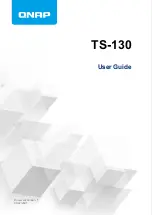
Port Features
Page 74
7710 SR OS Interface Configuration Guide
LAG and ECMP Hashing
When a requirement exists to increase the available bandwidth for a logical link that exceeds the
physical bandwidth or add redundancy for a physical link, typically one of the methods is applied;
equal cost multi-path (ECMP) or Link Aggregation (LAG). A 7710 SR can deploy both at the
same time, meaning, using ECMP of two or more Link Aggregation Groups (LAG) and/or single
links. The supports up to 16 equal cost routes in ECMP and up to eight ports per LAG. To avoid
out-of-sequence packets the algorithm for selecting the next hop in an ECMP or LAG must be
deterministic. The algorithm performs at line rate and is executed in the 7710 SR Network
Processor Array (NPA) when the packet ingresses the CFM, after determining that the next hop is
an ECMP and/or LAG.
Depending on the type of traffic that needs to be distributed into an ECMP and/or LAG, different
variables are used as input to the hashing algorithm that determines the next hop selection. There
are several traffic types to consider:
•
VPLS known unicast traffic. This is hashed based on the IP source and destination
addresses, or the MAC source and destination addresses for non-IP traffic. Optionally
TCP and UDP traffic can include the source and destination port information in the hash
algorithm.
•
The hash used for LAG for VPLS services does not include the VPLS service ID. The
MAC SA/DA are hashed and then, if the Ethertype is IPv4 or IPv6, the hash is replaced
with one based on the IP source address/destination address. If Layer 4 hashing is enabled
on the ingress port, the Layer 4 source port and destination port are hashed. Packets for the
same SAP can be sprayed across different LAG members, if the result of this hash modulo
the number of LAG links is different.
•
Unicast IP traffic routed by a 7710 SR router uses the IP SA/DA or optionally TCP/UDP
port information.
•
By default, MPLS switched traffic at an LSR is based on the whole label stack (up to five
labels), along with the incoming port and system IP address. Note that the EXP/TTL
information in each label is not included in the hash algorithm. This method is referred to
as “Label-Only Hash” option and is designated as a “lbl-only” option in the CLI.
An option to further hash on the header of an IP packet in the payload of the MPLS packet
is also provided. This method is referred to as the Label-IP Hash option and is designated
in the CLI as the
lbl-ip
option. In the first hash round, the algorithm will parse down the
label stack and once it hits the bottom it checks the next nibble. If the nibble value is 4
then it will assume it is an IPv4 packet.
The result of the hash of the label stack, along with the incoming port and system IP
address, is fed into another hash along with source and destination address fields in the IP
packet header. Otherwise, it will just use the label stack hash calculated in the first round
like in the default “Label-Only Hash” option. If there are more than five labels in the stack
the algorithm will also use the result of the label stack hash only.
Summary of Contents for 7710 SR OS
Page 6: ...Page 6 7710 SR OS Interface Configuration Guide Table of Contents...
Page 8: ...Page 8 7710 SR OS Interface Configuration Guide List of Tables...
Page 10: ...Page 10 7710 SR OS Interface Configuration Guide List of Figures...
Page 14: ...Preface Page 14 7710 SR OS Interface Configuration Guide...
Page 16: ...Getting Started Page 16 7710 SR OS Interface Configuration Guide...
Page 100: ...Configuration Process Overview Page 100 7710 SR OS Interface Configuration Guide...
Page 142: ...Service Management Tasks Page 142 7710 SR OS Interface Configuration Guide...
Page 428: ...Debug Commands Page 428 7710 SR OS Interface Configuration Guide...
Page 434: ...Standards and Protocols Page 434 Standards and Protocols...
Page 436: ...Page 436 7710 SR OS Interface Configuration Guide...
















































